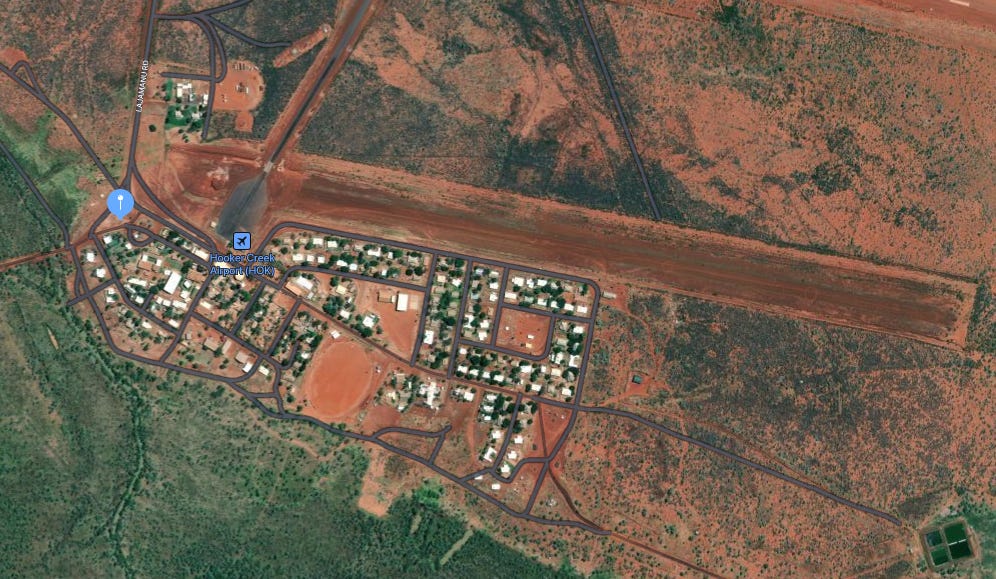Factoring the Remoteness of Indigenous Australian Communities Into Claims of Forced Inoculation
At the end of my deployment to Afghanistan in 2003, when I left the firebase outside the small town of Deh Rawood to return to Kandahar before heading home, I was one of the last to get on a chopper. Everywhere else I traveled in the country had been via the tandem rotor, heavy-lift Chinook helicopter, where troops sit facing the center and where there is only a narrow view of the landscape through the back hatch. This time, while most of my company was seated in Chinooks outside the firebase, I was placed in a door seat on the side of a BlackHawk where I had a full view of my surroundings for the entirety of the roughly hour long flight back to the main, international air base.
Most Westerners do not have a real grasp of how remote some locations are. We are used to traveling by highway, where, even in the most sparsely populated areas, we are no more than half an hour away from a gas station and some connection to modern civilization. In the southeast United States, where I live, one is hard pressed to find a location more than a ten minute drive away from another human being, outside of state and national parks.
I did not understand what “the middle of nowhere” meant until I went to Afghanistan. Within a minute of taking off from Deh Rawood, and hundreds of feet in the air, I was unable to see any sign of human modification to nature as far as I could see - not even a dirt road. It was nothing but desert and mountains for the entire hour, until Kandahar came into view. I had already gained a strong sense of the remoteness of the country during my eight months there, but this final experience was absolutely surreal; I might as well have been flying over Mars. Roughly halfway through the flight, in an open patch of desert between the mountains, I saw a lone man walking a train of camels. I could see the trail of their steps stretching into the distance. There are places in the world still so remote and unmodified by man that we cannot fully conceive of them without direct experience.
Yesterday, the government of the Northern Territory, Australia completely locked down the village of Lajamanu1. This was not done because a resident of the village tested positive for COVID - nobody yet has. The authorities are barring anyone from entering or leaving Lajamanu, and anyone who left between November 15 and the lockdown must quarantine, because COVID was found in their wastewater2. The disease was only detected through a procedural check of their sewage system, and now “health authorities”, which likely include the army and police, are actively preventing everyone in the village from leaving their home.
Lajamanu has about 500 residents, ninety percent of which are indigenous. It is a nearly seven hour, 346 mile (556 kilometer) drive to the nearest town of significance, Katherine, which has a population of 6300. Imagine living in a rural hamlet and being as far away from a supermarket as Los Angeles is from San Francisco. Lajamanu is one of the most remote communities in the entire first world.
There have been allegations of forced inoculation and relocation of residents in other, similarly remote, indigenous villages3. It is supremely important to consider the location and size of these communities before explicitly trusting the Northern Territory government and its Chief Minister, Michael Gunner, when they deny these claims. It is easy for Westerners to assume that a resident could pull out their smartphone and livestream the army committing violence, but that would be a gross misunderstanding of what is possible in these villages. Beyond the extreme remoteness and ruralness, the residents are overwhelmingly poor and almost wholly dependent on government provided sustenance. If the Northern Territory, which has openly admitted to using troops to move indigenous people to “quarantine camps”, was indeed committing violence, we would only hear of it after the fact and, most likely, through second hand reports. This is exactly what the claims have appeared as; elders living much closer to the Northern Territory capital of Darwin say they have received calls from communities like Robinson River, a town of less than 300 people, accusing the government of violently forced inoculation.
It is imperative that we continue to pressure our national leaders and international human rights organizations to insist upon an independent investigation into these accusations.
news.com.au Northern Territory town of Lajamanu forced into lockdown https://www.news.com.au/world/coronavirus/australia/northern-territory-town-of-lajamanu-forced-into-lockdown/news-story/32155a92feede43cac49bc0854f8d240
Rebel News Remote community in Northern Territory locked down after COVID detected in wastewater https://www.rebelnews.com/remote_community_in_northern_territory_locked_down_after_covid_detected_in_wastewater





